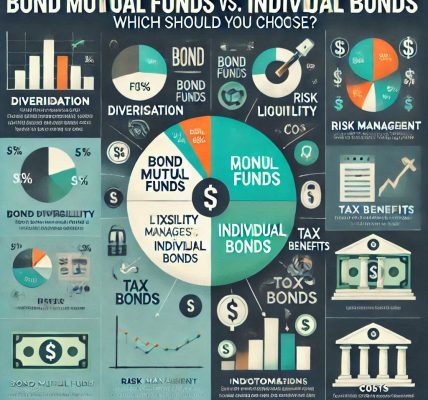Creating a steady passive income stream is a key goal for many investors, and bonds offer an excellent way to achieve this. Bonds provide regular interest payments and can add stability to your investment portfolio. Whether you are a beginner or an experienced investor, understanding how to leverage bonds for passive income can help you achieve financial freedom.
In this article, we will explore the fundamentals of bond investing, different types of bonds that generate passive income, key strategies for maximizing returns, and how to build a diversified bond portfolio.
What Are Bonds and How Do They Generate Passive Income?
Bonds are fixed-income securities that represent a loan from an investor to a government, corporation, or other entity. In return, the issuer pays periodic interest (also known as a coupon payment) until the bond matures, at which point the principal amount is repaid.
How Bonds Provide Passive Income
- Regular Interest Payments: Most bonds pay interest semi-annually, quarterly, or annually, making them a reliable source of passive income.
- Low Volatility: Compared to stocks, bonds are generally more stable and provide predictable returns.
- Compounding Opportunities: Reinvesting interest payments can enhance long-term wealth accumulation.
Types of Bonds for Passive Income
Not all bonds are created equal. Here are some of the best types of bonds for generating passive income:
1. Government Bonds
- Issued by national governments and considered one of the safest investments.
- Examples: U.S. Treasury Bonds, Municipal Bonds, and Inflation-Protected Bonds (TIPS).
- Ideal for risk-averse investors looking for stability and consistent returns.
2. Corporate Bonds
- Issued by corporations to raise capital.
- Offer higher yields than government bonds but come with increased risk.
- Investment-grade bonds are safer, while high-yield bonds (junk bonds) offer higher returns with greater risk.
3. Municipal Bonds (Munis)
- Issued by state and local governments.
- Often tax-free, making them attractive for high-income investors.
- Provide stable income with lower risk.
4. Bond ETFs (Exchange-Traded Funds)
- A collection of various bonds traded like stocks.
- Provide diversification and liquidity.
- Ideal for investors who want exposure to multiple bonds with minimal effort.
5. Dividend-Paying Bonds
- Some corporate and municipal bonds offer periodic dividends in addition to interest payments.
- Can enhance total returns while ensuring regular passive income.
Strategies to Build a Passive Income Stream with Bonds
1. Invest in a Diversified Bond Portfolio
Diversification is key to managing risk and optimizing returns. Consider investing in a mix of government, corporate, and municipal bonds.
2. Use a Bond Ladder Strategy
A bond ladder involves purchasing bonds with different maturities to create a staggered income stream. As bonds mature, reinvest the proceeds into new bonds to maintain consistent cash flow.
3. Choose Bonds with Higher Yields
While lower-risk bonds offer stability, higher-yield bonds can enhance income. However, ensure they align with your risk tolerance and financial goals.
4. Reinvest Interest Payments
Instead of spending your interest payments, reinvesting them in additional bonds or other income-generating assets can compound your wealth over time.
5. Opt for Tax-Advantaged Bonds
Municipal bonds offer tax-free interest income, which can significantly boost your net returns, especially if you fall into a higher tax bracket.
6. Invest Through Bond Funds or ETFs
For hands-off investing, bond mutual funds and ETFs provide instant diversification, professional management, and ease of liquidity.
Benefits of Using Bonds for Passive Income
- Stable and Predictable Income: Bonds provide consistent cash flow, making them ideal for retirees and conservative investors.
- Lower Risk Than Stocks: While not risk-free, bonds are generally safer than equities.
- Diversification Benefits: Adding bonds to your portfolio can reduce overall risk and volatility.
- Tax Advantages: Some bonds offer tax-free income, enhancing after-tax returns.
Potential Risks and How to Mitigate Them
While bonds are considered safer than stocks, they still carry risks. Here are some common risks and ways to manage them:
1. Interest Rate Risk
- When interest rates rise, bond prices fall.
- Solution: Invest in short-term bonds or bond ladders to minimize exposure.
2. Inflation Risk
- Inflation can erode the purchasing power of bond income.
- Solution: Consider Treasury Inflation-Protected Securities (TIPS) to hedge against inflation.
3. Credit Risk (Default Risk)
- If a bond issuer fails to make interest or principal payments, investors may face losses.
- Solution: Invest in high-credit-rated bonds (AAA, AA) or diversify across different issuers.
4. Liquidity Risk
- Some bonds may not be easily tradable, affecting their value.
- Solution: Stick to government bonds, high-quality corporate bonds, or bond ETFs for better liquidity.
How to Get Started with Bond Investing
Step 1: Assess Your Financial Goals
- Determine your income needs, risk tolerance, and investment horizon.
Step 2: Choose the Right Bonds
- Select a mix of government, corporate, and municipal bonds based on your financial strategy.
Step 3: Open an Investment Account
- Use brokerage accounts, bond mutual funds, or ETFs to start investing in bonds.
Step 4: Monitor and Rebalance Your Portfolio
- Regularly review your bond holdings and reinvest matured bonds for continued passive income.
Conclusion
Building a passive income stream with bonds is an excellent way to achieve financial stability and long-term wealth growth. By selecting the right bonds, implementing strategic investment techniques, and managing risks effectively, you can create a reliable income source without active management.
Whether you’re a conservative investor seeking stability or an income-focused investor looking for higher yields, bonds can be a valuable addition to your financial strategy. Start small, diversify wisely, and enjoy the benefits of passive income from bonds.
Disclaimer: This article is for informational purposes only and should not be considered financial or investment advice. Always consult a financial professional before making any investment decisions.


